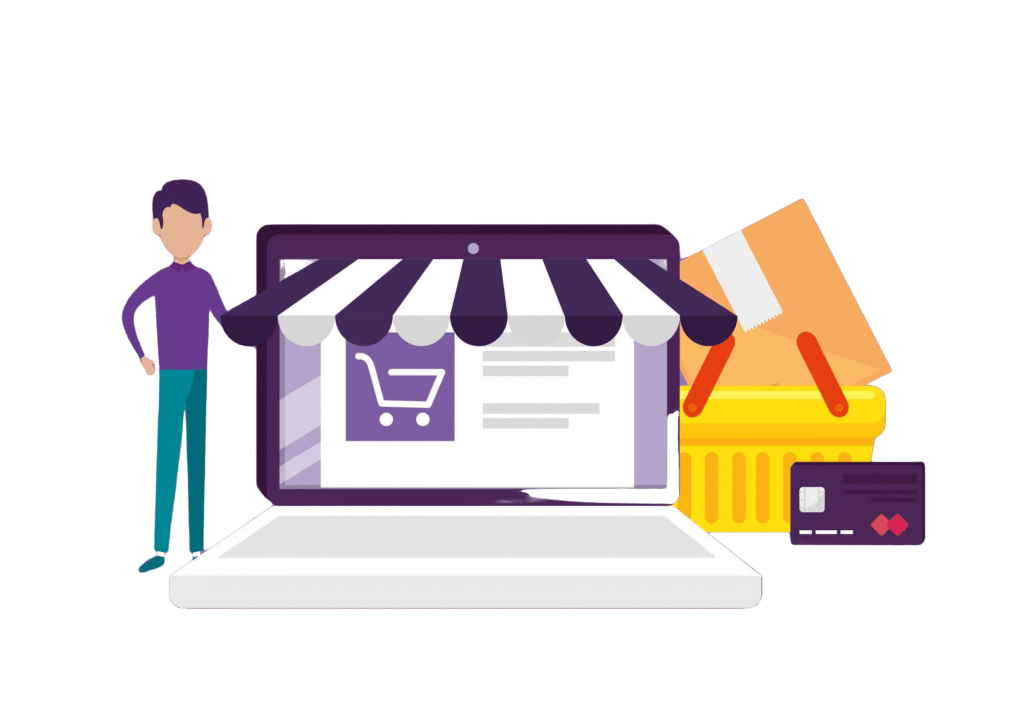Launching an online business can be both exciting and daunting. While it requires an initial investment to set up a store, execute marketing strategies, and manage inventory, there are ways to make it more cost-effective. One such strategy is Connective Ecommerce.
- What Is Connective Ecommerce?
- Benefits of Connective Ecommerce
- 1. Reduced Financial Risk
- 2. Cost-Effective Advertising
- 3. Ready-Made Templates
- 4. Freedom to Experiment
- 5. Scalability
- 6. Lean Team Structure
- How to Implement Connective Ecommerce strategies for your business
- Assess Your Current Situation
- Organic Traffic Generation
- Ready-Made Ecommerce Templates
- Dropshipping Integration
- Experiment and Iterate
- Customer Experience Focus
- Scale Gradually
- FAQ’s on Connective Ecommerce
- 1. Is Connective Ecommerce a Scam?
- 2. Can I Start an Online Store with No Money?
- 3. Do I Have to Hire Developers for a Website?
- 4. How Does Connective Ecommerce Work?
- 5. Why Are Analytics Important in Connective Ecommerce?
- 6. How Do I Ensure Legal Compliance in Connective E-commerce?
- Conclusion
What Is Connective Ecommerce?
Connective Ecommerce is an innovative approach to online selling that minimizes risk for entrepreneurs by reducing their upfront financial investment. The term was coined by Cortney Fletcher, an entrepreneur and founder of the online ecommerce course provider eCom Babes.
How Does It Work?
Connective Ecommerce focuses on three main areas:
- Advertising: Instead of spending money on paid advertising, entrepreneurs leverage organic traffic through social media marketing, search engine optimization (SEO), and affiliate marketing partnerships. These strategies can be executed without high upfront costs.
- Selling: Fletcher recommends using ready-made ecommerce templates to build attractive, low-cost online stores. This eliminates the need to hire expensive web developers to create custom stores from scratch.
- Order Fulfillment: Connective E-commerce business owners embrace dropshipping, an ecommerce model where products are sold without holding inventory. When a sale occurs, the business pays a portion of the proceeds to a third-party supplier who handles inventory and order fulfillment.
Connective Ecommerce vs. Dropshipping
Think of dropshipping as one part of Connective Ecommerce. Dropshipping allows you to start an online business without developing inventory management infrastructure or investing in shipping systems. Connective Ecommerce expands on this model, further reducing the upfront costs of selling online.
Is Connective Ecommerce Legitimate?
Absolutely! Connective E-commerce is a legitimate online business strategy. Many business owners use free tools and organic marketing opportunities to reduce overhead, especially during the startup phase. Here are some benefits:
- Limited Hiring Needs: With Connective E-commerce, you won’t need an extensive team right away. You can focus on essential tasks without the burden of hiring multiple employees.
- Reduced Startup Costs: By minimizing upfront expenses, you can allocate resources more efficiently and invest in growth areas.
- Freedom to Experiment: Connective Ecommerce allows entrepreneurs to experiment with different approaches without significant financial risk.
Benefits of Connective Ecommerce
1. Reduced Financial Risk
Connective E-commerce minimizes the upfront financial investment required to start an online business. By leveraging organic marketing and dropshipping, entrepreneurs can launch their ventures without significant capital.
2. Cost-Effective Advertising
Instead of spending money on paid ads, Connective E-commerce relies on organic traffic through social media, SEO, and affiliate marketing. This approach allows businesses to reach their audience without hefty advertising budgets.
3. Ready-Made Templates
Connective Ecommerce encourages the use of ready-made ecommerce templates. These templates are affordable and eliminate the need for expensive custom web development. Entrepreneurs can create attractive online stores without breaking the bank.
4. Freedom to Experiment
With reduced financial risk, entrepreneurs have the freedom to experiment with different strategies. Whether it’s testing new products, marketing channels, or pricing models, Connective E-commerce allows for agile decision-making.
5. Scalability
As the business grows, Connective E-commerce remains scalable. Entrepreneurs can gradually invest in additional resources as needed, without the pressure of high initial costs.
6. Lean Team Structure
Connective E-commerce doesn’t require an extensive team right from the start. Business owners can focus on essential tasks without the burden of hiring multiple employees.
How to Implement Connective Ecommerce strategies for your business
Implementing Connective Ecommerce strategies for your existing business involves a thoughtful approach. Let’s break it down step by step:
Assess Your Current Situation
- Evaluate your current ecommerce setup, including your website, marketing channels, and order fulfillment process.
- Identify areas where you can reduce costs and streamline operations.
Organic Traffic Generation
- Leverage social media platforms to create engaging content related to your products or services.
- Optimize your website for search engines (SEO) by using relevant keywords, creating high-quality content, and building backlinks.
- Explore affiliate marketing partnerships to expand your reach without upfront costs.
Ready-Made Ecommerce Templates
- Consider using existing ecommerce templates or platforms (such as Shopify, WooCommerce, or Magento) to build your online store.
- These templates are cost-effective and save time compared to custom development.
Dropshipping Integration
- Research dropshipping suppliers in your niche. Look for reliable partners who can handle inventory and order fulfillment.
- Integrate dropshipping into your ecommerce platform. When a customer places an order, the supplier ships the product directly to the customer.
Experiment and Iterate
- Start small and test different strategies. Monitor their effectiveness and adapt as needed.
- Experiment with product offerings, pricing models, and marketing channels.
- Use data analytics to track performance and make informed decisions.
Customer Experience Focus
- Despite cost-saving measures, prioritize a seamless customer experience.
- Ensure timely order fulfillment, excellent customer support, and a user-friendly website.
Scale Gradually
- As your business grows, reinvest profits into areas that drive further growth.
- Hire additional team members or outsource tasks when necessary.
Remember that Connective Ecommerce is about agility, resourcefulness, and adaptability. Continuously monitor your progress, stay informed about industry trends, and be open to adjusting your strategies as needed.
FAQ’s on Connective Ecommerce
1. Is Connective Ecommerce a Scam?
Absolutely not. Connective E-commerce is a legitimate approach to conducting ecommerce. It’s all about leveraging existing tools and strategies to create a seamless shopping experience for your customers. Entrepreneurs worldwide are adopting this model and seeing positive results.
2. Can I Start an Online Store with No Money?
While launching an online retail operation with absolutely no financial investment is nearly impractical, Connective Ecommerce allows you to start with minimal funds. By relying on existing marketplaces, technology, and dropshipping services, you can significantly reduce upfront costs.
3. Do I Have to Hire Developers for a Website?
Nope! Connective E-commerce doesn’t require you to hire web developers to build a custom website from scratch. Instead, you can use existing ecommerce templates or platforms to create an attractive online store without the hefty price tag.
4. How Does Connective Ecommerce Work?
Connective Ecommerce focuses on creating a seamless shopping experience while relying on infrastructure that’s already in place. You can sign up for online marketplaces and software tools that handle heavy lifting, allowing you to focus on running your business effectively.
5. Why Are Analytics Important in Connective Ecommerce?
Analytics provide valuable insights into customer behavior, sales trends, and marketing effectiveness. By analyzing data, you can make informed decisions, optimize your strategies, and enhance the overall customer experience.
6. How Do I Ensure Legal Compliance in Connective E-commerce?
Legal compliance is crucial. Ensure that you follow regulations related to taxes, consumer protection, privacy, and intellectual property. Consult legal professionals or use resources specific to your region to stay compliant.
Conclusion
Connective E-commerce empowers small businesses to enter the online marketplace with confidence. By strategically minimizing costs and leveraging existing resources, entrepreneurs can build successful ecommerce ventures. So, whether you’re just starting out or looking to optimize your existing online business, consider adopting the Connective E-commerce framework.
Remember, the digital landscape is ever-evolving, and Connective Ecommerce provides a smart pathway to sustainable growth.
Read More:
How Much Does It Really Cost to Build a WordPress Website?
How to Choose The Best Premium WordPress Theme for Your Website


